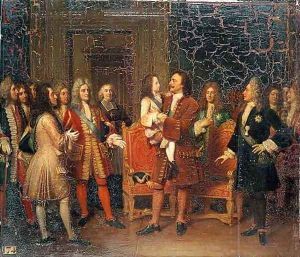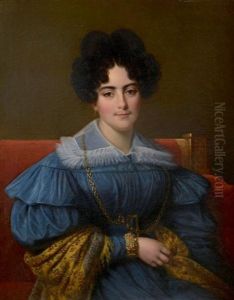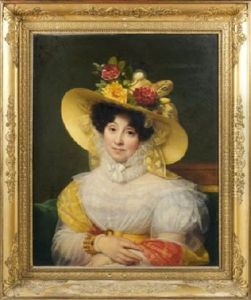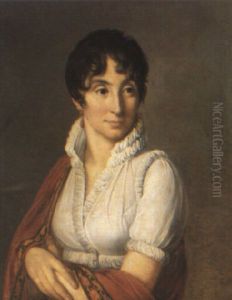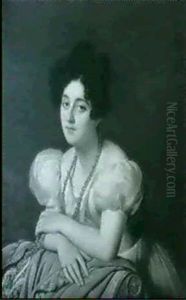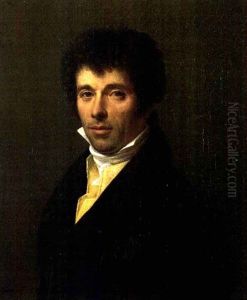Louise Marie Jeanne Hersent Paintings
Louise Marie Jeanne Hersent, later Madame Louis Hersent, was a prominent French painter born on March 10, 1784, in Paris. She was one of the accomplished female artists of her time, a period when the art world was predominantly male-dominated. Louise Hersent was initially taught by her father, who was also an artist, before she received formal training under Jean-Baptiste Regnault, a respected French painter.
Louise Hersent's talent was evident early on, and she made her debut at the Paris Salon in 1802. She continued to exhibit her works there, gaining recognition and acclaim. In 1806, she married the painter Louis Hersent, and they both became well-known figures in the Parisian art scene. Her husband was a successful artist as well, and they often collaborated on projects, with Louise Hersent specializing in portraits and genre paintings.
Throughout her career, Louise Hersent was celebrated for her portraits which were notable for their sensitive characterizations and technical skill. She painted several influential figures of her time, including portraits of the Duchess of Angoulême, the Countess of Genlis, and the Marquise de Pastoret. Her works were characterized by a delicate and refined style, often focusing on the grace and elegance of her subjects.
Louise Hersent's genre paintings were also well-received, depicting scenes of domestic life and children, which were popular subjects during the Romantic period. Her ability to capture the innocence and charm of her subjects, along with her adept use of light and color, contributed to her success.
Despite the challenges of being a woman in a male-dominated field, Louise Hersent achieved a successful career. Her contributions to art were recognized in her time, and she was awarded a gold medal at the Salon in 1824. She continued to paint until her later years, leaving behind a legacy of work that is appreciated for its historical and artistic value.
Louise Marie Jeanne Hersent passed away on October 2, 1862, in Paris. Her paintings remain a testament to her skill and are held in various collections, providing insight into the life and society of her era. Hersent's work continues to be studied and celebrated for its contribution to French art, particularly in the context of women's roles in the early 19th century art world.
